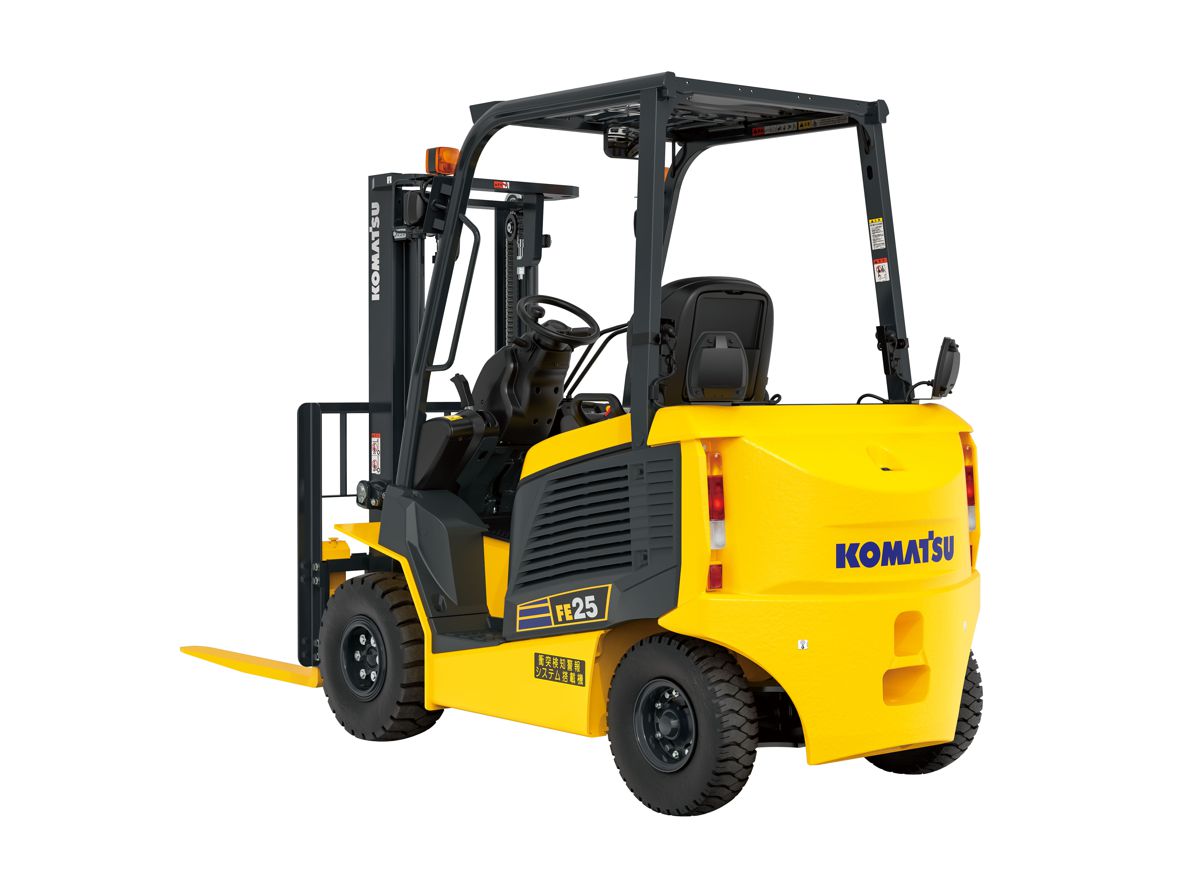Komatsu introduces Collision Detection Warning System for electric forklifts
Komatsu has developed a Collision Detection Warning System, which is now an option for the 2.5-ton and 3.0-ton class electric forklifts – FE25-2 and FE30-2.
This system detects people, objects, and work vehicles with a radar installed behind the vehicle body when the forklift is moving backward, and alerts the operator with an alarm lamp and buzzer.
Contact accidents account for about half of the accidents caused by forklifts when moving backward, which involve insufficient safety measures.
This system uses a peripheral surveillance radar manufactured by Furukawa Automotive Systems Inc. A radio pulse is sent using the frequency band of 24 GHz, and the reflected pulse wave is analysed to detect the relative velocity and position of targets.
Since it is not easily affected by solar radiation and weather conditions, stable detection can be expected in various situations and environments. In addition, since the warning range is linked to the traveling direction and running speed of the vehicle predicted from the direction of the tires, it reduces unnecessary warnings to the operator and contributes to the realization of a comfortable working environment and improvement of productivity.
Komatsu plan to gradually develop this technology not only in their forklifts, but also construction machinery, fitting it as standard equipment and as retrofit kits, and aim to further improve the function of the safety support system.

Two-stage warning
The system has two levels according to the degree of collision risk predicted from the relative speed and position of the target detected by the radar. The operator is notified of the degree of danger by the difference between the blinking interval of the alarm lamp and the intermittent sound of the alarm buzzer.
Warning linked to direction and speed
When moving backward, the direction of travel is predicted from the steering angle (tire turning angle), and an alarm is issued to the operator when there is a risk of collision in that direction.
Since no warning is issued to people, luggage, etc. outside the direction of travel of the vehicle, unnecessary warnings to the operator are reduced.
No tags or sensors
Since the radar detects people, luggage and work vehicles, there is no need to attach tags or sensors to the detection targets.




















